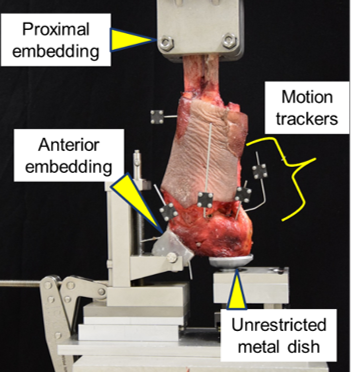Analysis of three different screw configurations for fixation of Sanders Type II B intraarticular calcaneal fractures
Background
Intraarticular calcaneal fractures are devastating injuries with significant socioeconomic impact due to prolonged recovery periods. In recent years, less invasive screw fixation techniques have been increasingly applied to improve functional outcomes and reduce wound complications. Appropriate screw configuration is mandatory for good fixation stability to allow for early exercise and fast recovery. However, the effect of screw configuration on the biomechanical competence of the fixation construct has remained unknown.
Goal
To assess the biomechanical performance of three different screw configurations for fixation of Sanders type II B calcaneal fractures.
Results
Intraarticular Sanders type II B calcaneus fractures were simulated in 15 human cadaveric feet by means of osteotomies. The specimens were randomized into 3 groups for fixation with either (1) two 6.5 mm parallel longitudinal screws entering the tuber calcanei above the insertion of the Achilles tendon to the anterior process, (2) two 6.5 mm parallel screws entering the tuber below the Achilles tendon aiming at the anterior process, or (3) two 6.5 mm parallel longitudinal screws entering the tuber calcanei above the Achilles tendon engaging the anterior process. Bone mineral density was equalized among the groups. Each specimen was biomechanically tested under cyclic axial loading with the hindfoot in a simulated midstance position. The initial peak load of 200 N was progressively increased by 0.1 N/cycle. Interfragmentary movements were captured by means of optical motion tracking. From biomechanical point of view, calcaneal screw configuration implementing one oblique screw, buttressing the posterior facet, seems to provide the highest hindfoot stability under dynamic loading. Support of the posterior facet by means of buttress or proximally inserted longitudinal screws was associated with lower vertical subsidence and significantly less plantar movements compared to a screw configuration with more distally placed longitudinal screws.
-
Partner
Raykov D (Prof), Medical University Varna, Varna, Bulgaria


